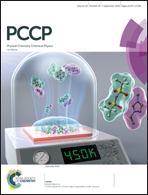Hybridization induced metallic and magnetic edge states in noble transition-metal-dichalcogenides of PtX2 (X = S, Se) nanoribbons
Abstract
The semiconducting transition metal dichalcogenide (TMD) 2H-MoS2 zigzag nanoribbon has two different edges, and only one edge shows metallic properties due to symmetric protection. In the present work, a nanoribbon with two parallel metallic and magnetic edges was designed from a noble TMD 1T-PtX2 (X = S, Se) by employing first-principles calculations based on density functional theory (DFT). The band structure, density of states (DOS), and simulated scanning tunneling microscopy (STM) of three possible zigzag edge states of monolayer semiconducting PtX2 were systematically studied. Detailed calculations showed that the Pt-terminated edge state among the three zigzag edge states was metallic. The Pt-terminated edge state designed from monolayer PtS2 showed both metallic and magnetic properties. These metallic and magnetic properties were mainly contributed to by the hybridization of the 5d orbitals of Pt atoms and the 3p orbitals of S atoms located at the edges. However, hybridization of the 5d orbitals of Pt atoms and the 4p orbitals of Se atoms located at the edges does not bring magnetic properties to the zigzag metallic PtSe2 nanoribbon. The interesting electronic and magnetic properties of 1T-PtX2 nanoribbons indicate that they may have promising applications as zigzag nanoribbons in spin electronics and photovoltaic cells.



 Please wait while we load your content...
Please wait while we load your content...